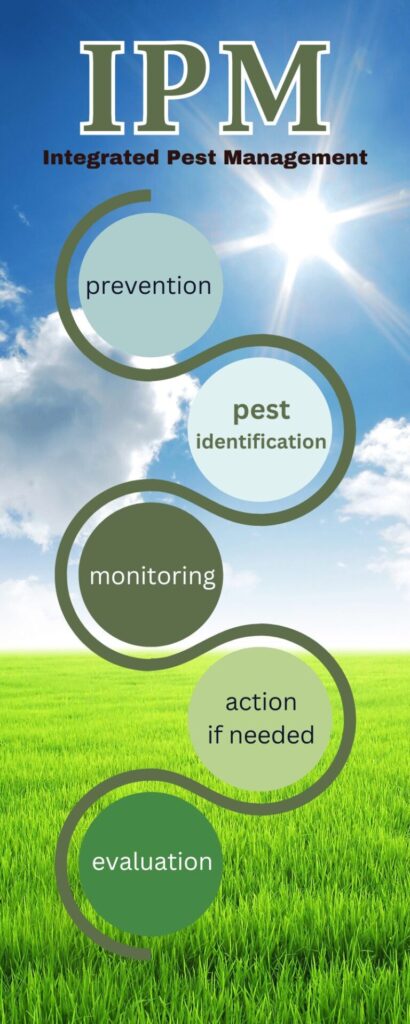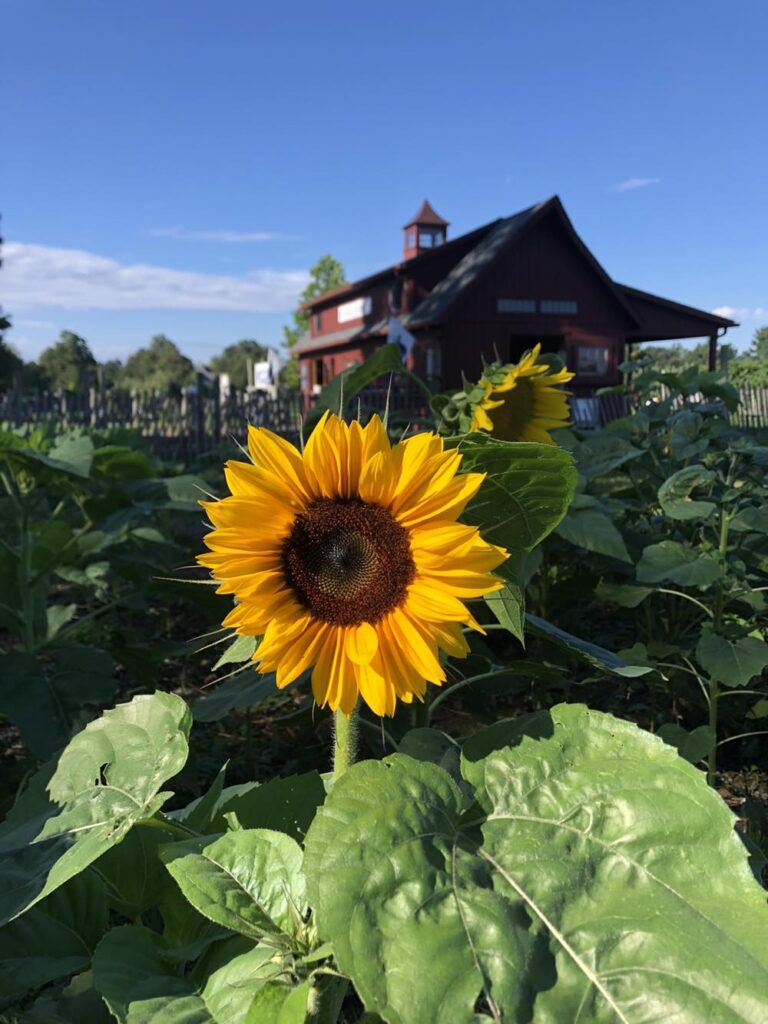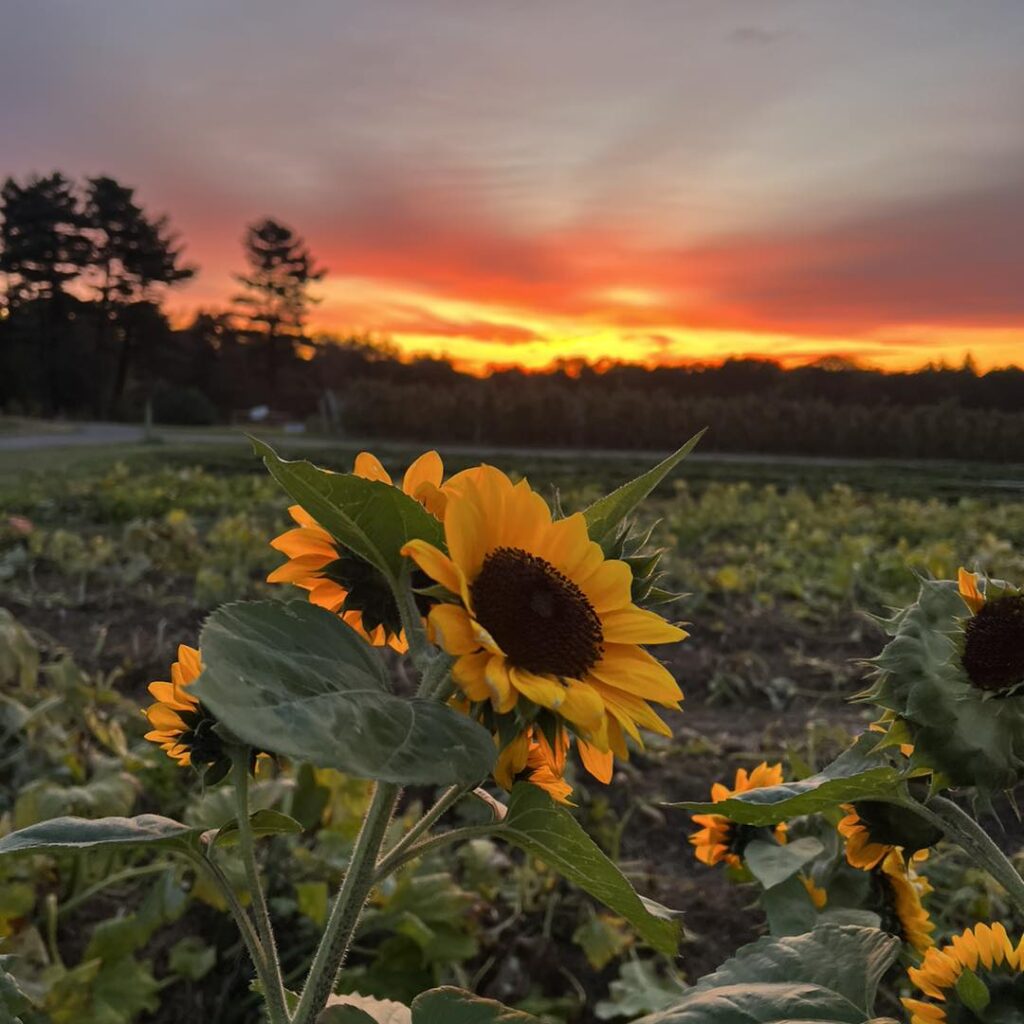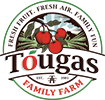
Tougas Family Farm started working with UMASS Agriculture Dept in the 80’s as part of a pioneering team with the goal of growing premium fruit in the safest and most abundant manner possible. This team of growers and scholars helped developed the Integrated Pest Management System (IPM) which is now used all over the world.
The Tougas family has always lived on the farm and since their health, longevity and well-being is important to them, they have always embraced safe farming practices. There are now three generations of the Tougas family living on the farm, plus almost daily guests visiting our Pick-Your-Own operation, so we continue to be very conscientious of everyone’s well being with our farming practices.
Although many consumers are focused on organic farming as the only way to decrease pesticides in their food, IPM practices help to reduce the use of pesticides as well!
IPM assesses and addresses the source of insect and pest problems, whereas pesticides, organic or not, simply respond to the pest problem. The IPM approach means pesticides often are not even used, even when pests are present, because there are not enough of them to pose a serious threat to the crops. Overall, IPM helps to reduce the use of pesticides all-together which is the bottom-line goal of most conscientious consumers.
In addition, IPM allows a selection of low risk technologies, techniques, and pesticides that organic farmers are not able to use simply because they are synthetic. It’s important to remember that just because something is organic it doesn’t mean it is not toxic or even less toxic than a synthetic.
Q: What are some of the methods you use?
-
- Hire scouts to monitor and count pests
-
- Produce and use compost as a soil amendment
-
- Cover crop to rebuild soil health and prevent erosion
-
- Regular mowing and keeping the orchards clean prevents pests and disease
-
- Drip irrigation for more efficient use of water
-
- Use of insect traps for monitoring and control
-
- Planting disease resistant varieties
-
- Use of beneficial insects, pheromone releasing techniques, keeping orchard ecologically balanced
Q: So if this is all true, why don’t more farms use Integrated Pest Management?
A: The bottom line is, IPM is more time consuming and costly. The IPM method actually requires more time and energy from the grower as IPM demands proper planning. IPM also requires the involvement of more educated and trained personnel which is more costly. In addition, the ongoing monitoring and assessment of pest populations in the field as well as the decision and implementation of the many different management techniques, are also more time consuming and costly.
Q: Why are some low risk pesticides not available for organic use?
A: To be certified organic you are required to use natural materials and sometimes the lowest risk product is synthetic, therefore unable to be used if the farm is certified organic.
Q: Do you use any organic pesticides?
A: Yes! We use organic pesticides when they are the best and safest choice for the application required.
Q: What are the four pillars of IMP?:
-
- Determine & Set Action Thresholds – Before taking any pest control action, IPM first sets a threshold where actions will be taken on pest populations. (often no action is taken and pests are allowed to exist)
-
- Monitor and Identify Pests – we use sticky traps to capture and manually count insects to understand our pest levels in the field
-
- Prevention – Keeping fields free of dropped fruit, debris, practicing good pruning methods are all ways we keep our crops less attractive to nuisance pests
-
- Control – only when needed do we act to lower the pest population. This might be achieved by using a predator insect or a pesticide spray




